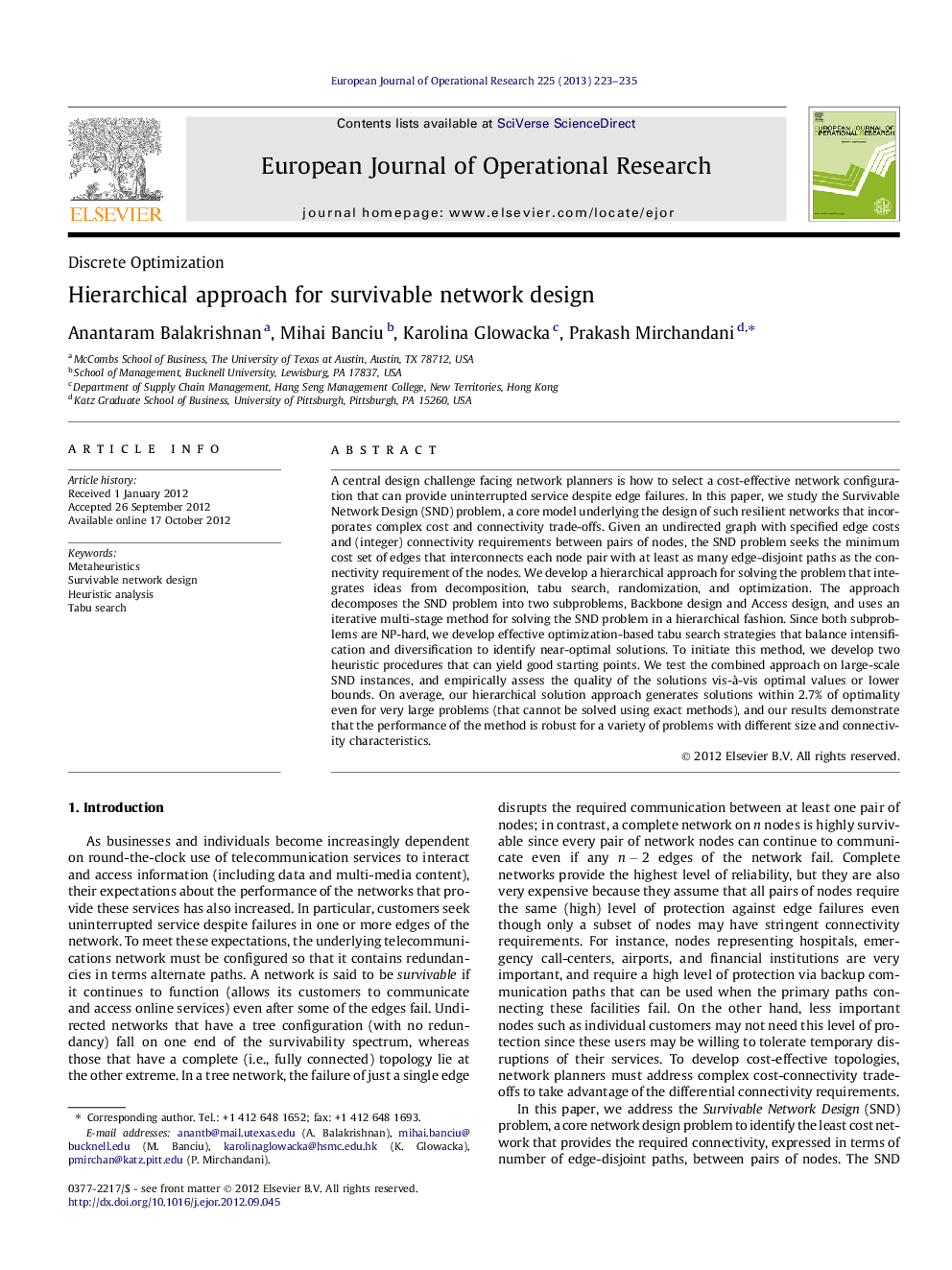ترجمه فارسی عنوان مقاله
رویکرد سلسله مراتبی برای طراحی شبکه survivable
عنوان انگلیسی
Hierarchical approach for survivable network design
| کد مقاله | سال انتشار | تعداد صفحات مقاله انگلیسی |
|---|---|---|
| 70503 | 2013 | 13 صفحه PDF |
منبع

Publisher : Elsevier - Science Direct (الزویر - ساینس دایرکت)
Journal : European Journal of Operational Research, Volume 225, Issue 2, 1 March 2013, Pages 223–235
ترجمه کلمات کلیدی
الگوریتمهای فراابتکاری؛ طراحی شبکه Survivable؛ تجزیه و تحلیل اکتشافی؛ جستجوی ممنوع
کلمات کلیدی انگلیسی
Metaheuristics; Survivable network design; Heuristic analysis; Tabu search

